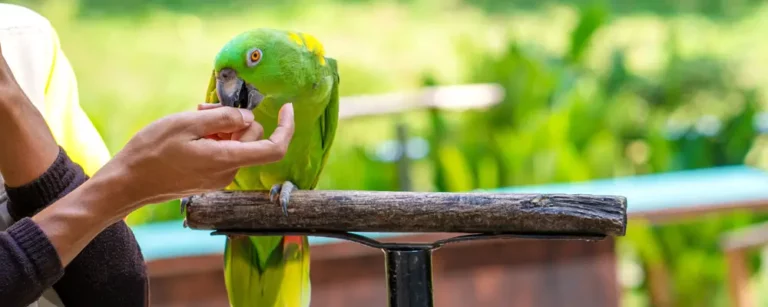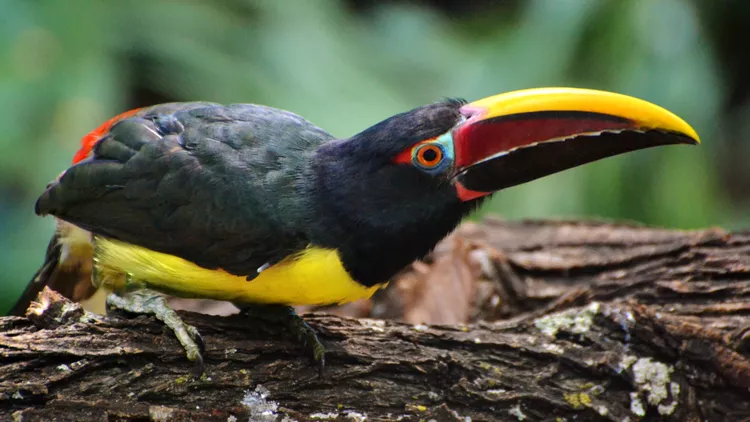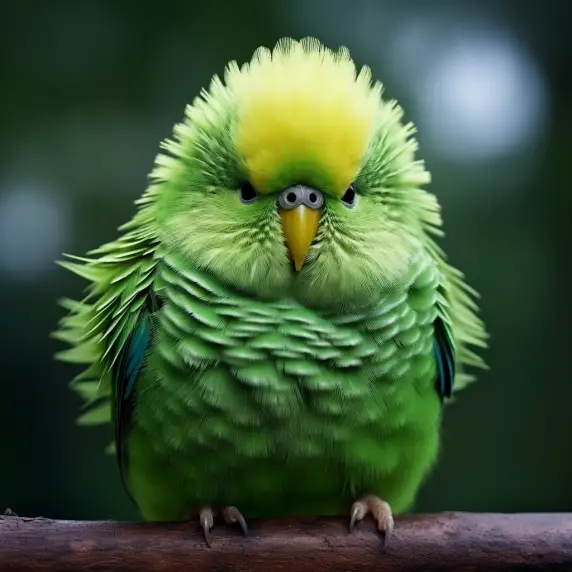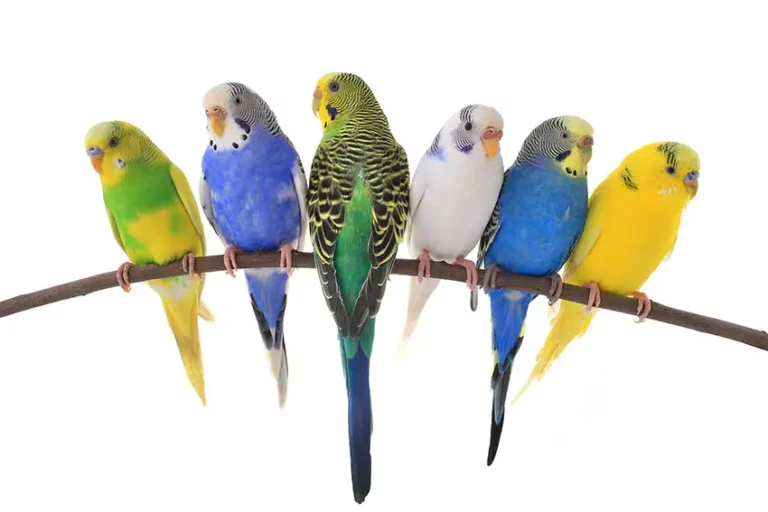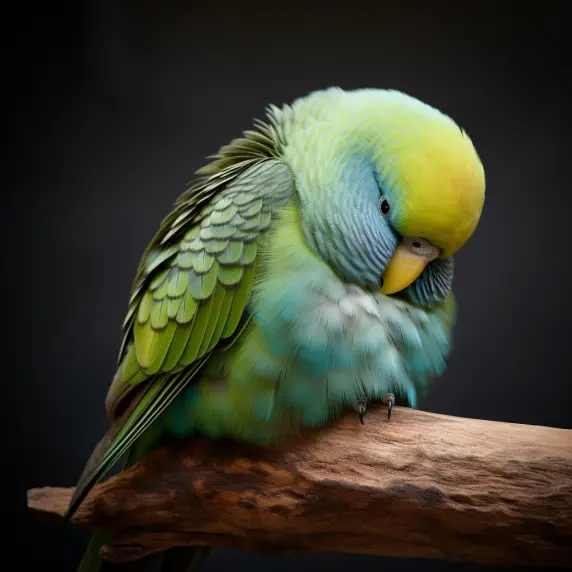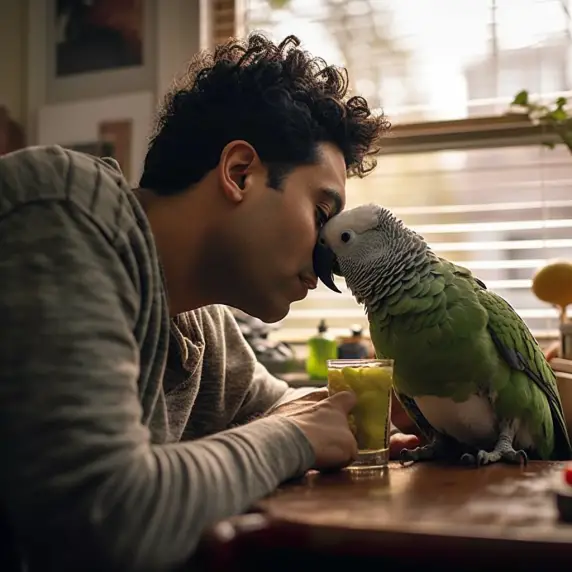Choosing the Right Pet Bird for Your Lifestyle: A Comprehensive Guide
Introducing a pet bird to your family can be a rewarding and enjoyable experience, as birds are intelligent, engaging, and often low-maintenance pets.
However, due to the wide array of bird species, it’s important to select one that fits your lifestyle and environment to ensure a happy coexistence. Poor matches may lead to unfortunate outcomes like rehoming or neglect.
This guide will assist you in choosing the perfect bird for your lifestyle, covering key aspects such as daily life assessment, bird temperament, size suitability, lifespan commitment, and ethical sourcing. With careful consideration, you’ll find your ideal feathered companion.
Key takeaways
Different bird species suit different lifestyles; it’s important to choose the right match.
Assess your daily routine and environment before deciding on a bird species.
Birds have diverse temperaments and personality traits; understand them to ensure a good fit.
The bird’s size must be suitable for your home environment.
Bird ownership involves a long-term commitment, considering their lifespan.
It’s important to ethically acquire your pet bird, considering adoption or reputable breeders.
A well-chosen bird can provide joy and companionship, while a poor choice can lead to rehoming or neglect.
Assessing Your Lifestyle and Environment
Time commitment and daily care requirements
Before bringing a pet bird into your life, it’s crucial to assess the amount of time you can devote to its care. Birds require daily attention, including feeding, cleaning their cage, and providing mental and physical stimulation. Some species demand more interaction and socialization than others. Reflect on your daily routine and determine if you can set aside the necessary time to care for your bird properly.
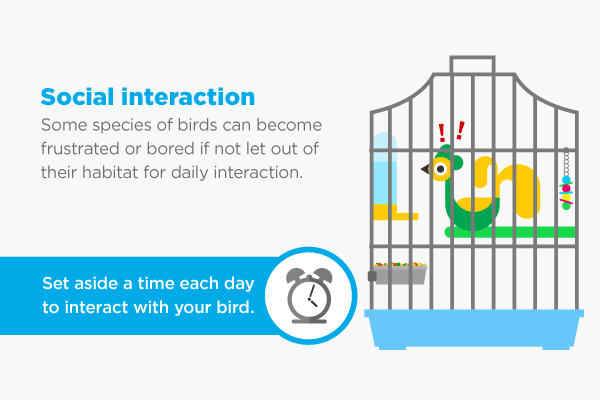
Space availability and cage size considerations
Consider the size of your living space and the type of cage that will accommodate your chosen bird species. Birds need ample room to move around, stretch their wings, and engage in play activities.
The cage should be large enough for perches, toys, food dishes, and a water source while still providing room to fly. Think about where you can place the cage in your home, ensuring it’s away from direct sunlight, drafts, and excessive noise.
Noise level tolerance
Birds can be vocal, and their sounds can range from melodious songs to loud squawks. Consider your tolerance for noise, especially if you live in an apartment or share walls with neighbors. Research the vocal tendencies of different bird species to find one that fits your noise level preferences and living situation.
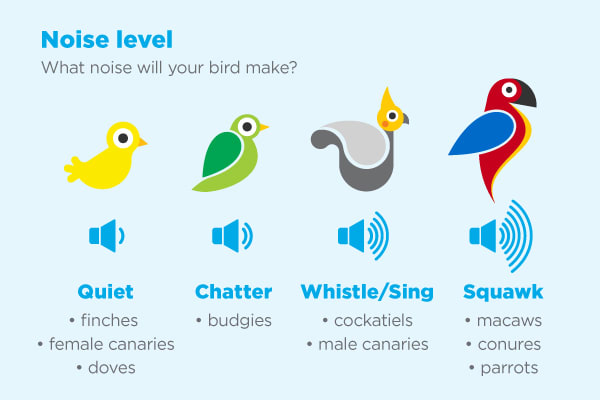
Allergies and potential health concerns
If you or someone in your household has allergies or respiratory issues, it’s essential to consider the potential impact of having a pet bird. Birds can produce dust or dander, which could exacerbate allergies or respiratory problems.
Look for species with minimal dander or choose a bird that spends most of its time in a dedicated room with proper air filtration.
Financial considerations
Owning a pet bird comes with ongoing expenses, including food, toys, cage accessories, and veterinary care. Larger birds often have higher costs due to more extensive housing and dietary needs.
Research the financial requirements of various bird species to ensure you can provide the necessary resources for your pet’s well-being.
Understanding Bird Temperament and Personality Traits
When choosing the right pet bird for your lifestyle, it’s essential to consider their temperament and personality traits. Each bird species has unique characteristics that may make them better suited for specific living situations and owner preferences.
Familiarize yourself with the personality traits of different bird species to find the perfect match for your lifestyle.
Social and affectionate birds
Some bird species are known for their social and affectionate nature. These birds often enjoy interacting with their owners and thrive on companionship. African Greys, Macaws, and Cockatoos are examples of species that tend to form strong bonds with their caretakers.
If you have the time and desire to engage in daily socialization and are looking for a bird that enjoys physical interaction, these species may be ideal for you.
Independent and low-maintenance birds
For those with a busier lifestyle or less time to spend on daily bird interaction, there are independent and low-maintenance bird species. These birds are content with less human interaction and can entertain themselves with toys and activities in their cage.
Budgies, Finches, and Canaries are examples of more independent bird species that still offer the beauty and charm of pet birds without the demand for constant attention.
Birds with special requirements (e.g., diet, exercise, socialization)
Some bird species may have unique needs related to their diet, exercise, or socialization. For example, Lories and Lorikeets require specialized nectar diets and more frequent cage cleaning due to their liquid-based diet.
Amazon Parrots and Pionus Parrots may need more extensive exercise opportunities to maintain their physical and mental health. If you’re interested in a bird with specific requirements, ensure that you can accommodate these needs and are prepared for the additional commitment.
Choosing the Right Size Bird for Your Home
When selecting the perfect pet bird for your lifestyle, consider the size of the bird and how it will fit within your living space. Birds come in various sizes, and each size category offers unique characteristics and care requirements. Here, we’ll explore small, medium, and large birds to help you decide which size is the best fit for your home.
Small birds (e.g., budgies, parakeets, finches)
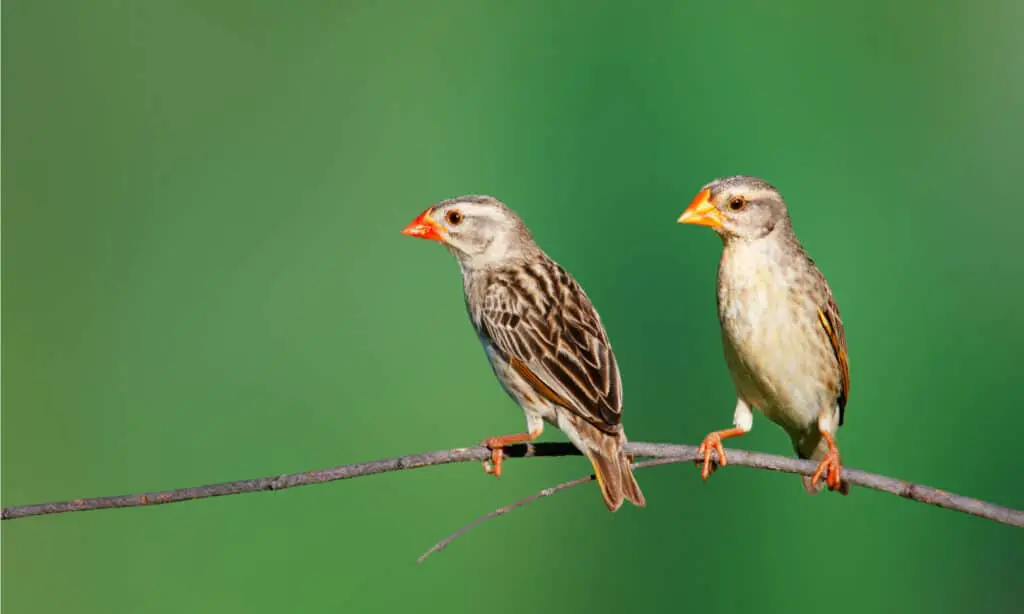
Small birds, such as budgies, parakeets, and finches, are ideal for those with limited living space. These birds require smaller cages and are typically easier to care for due to their size. Small birds can still be engaging, intelligent, and social, making them excellent companions.
They are also generally quieter than larger species, which is an essential consideration for apartment dwellers or those with noise concerns.
Medium birds (e.g., cockatiels, conures, lovebirds)
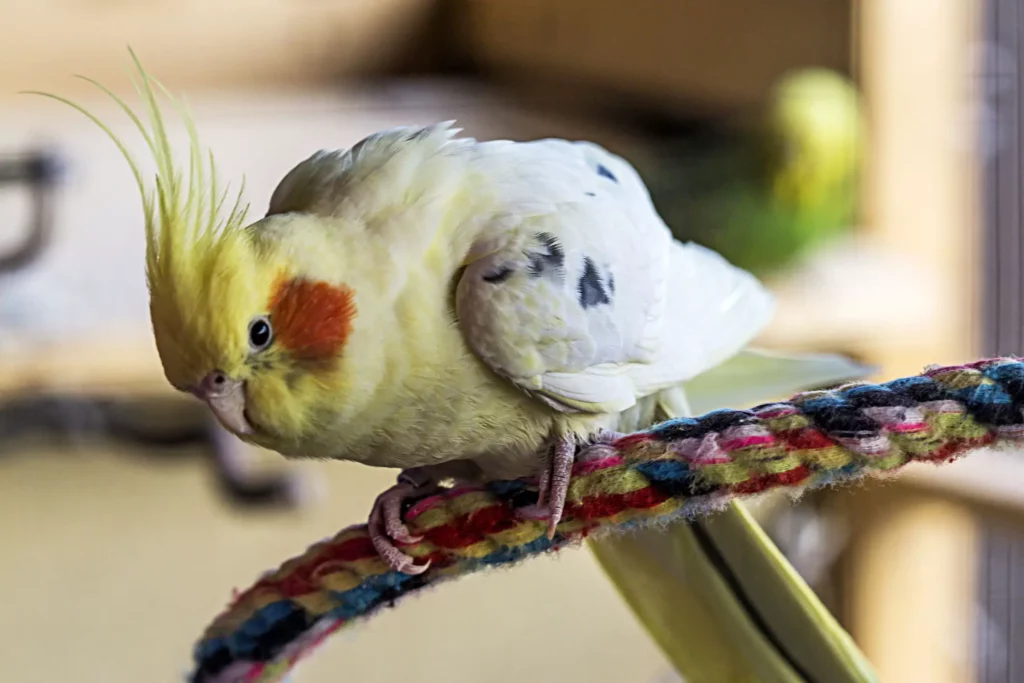
Medium-sized birds like cockatiels, conures, and lovebirds offer a balance between the ease of care associated with small birds and the intelligence and socialization often found in larger species.
These birds may require more extensive cages and a higher level of social interaction than smaller birds but can be incredibly rewarding companions. Their vocalizations tend to be less intense than larger parrots but may still be louder than the small bird category.
Large birds (e.g., parrots, macaws, cockatoos)
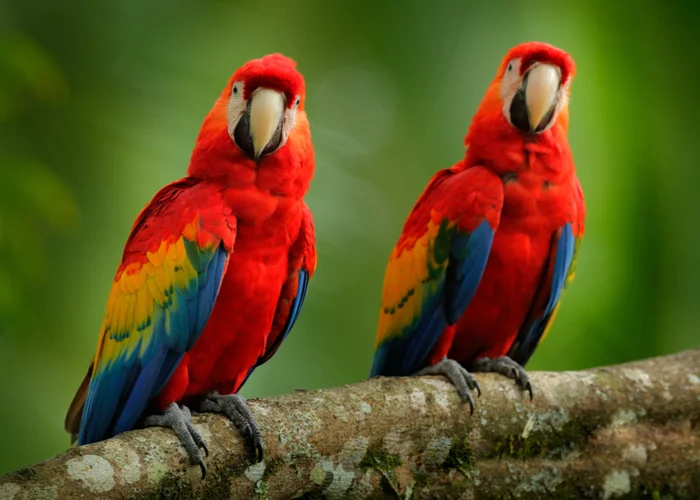
Large birds such as parrots, macaws, and cockatoos can make impressive and loving pets for the right owner. These species often require substantial living space, with large cages and ample room to move around.
Large birds are typically more intelligent, social, and trainable, making them excellent companions for those with the time and resources to invest in their care.
Keep in mind that larger species can be noisier and may not be suitable for every living situation. They also often have a longer lifespan, requiring a significant long-term commitment from their owner.
Bird Lifespan and Longevity: A Commitment to Consider
When choosing a pet bird for your lifestyle, it’s essential to think about the bird’s lifespan and the long-term commitment required. Different bird species have varying lifespans, and understanding the longevity of your chosen bird can help you prepare for the years ahead.
Lifespan of common pet bird species
Here is a general overview of the lifespans of some popular pet bird species:
- Budgies: 7-15 years
- Canaries and Finches: 10-15 years
- Cockatiels: 10-15 years
- Lovebirds: 15-25 years
- Conures: 20-30 years
- African Greys: 40-60 years
- Macaws: 50-70 years
- Cockatoos: 40-70 years
It’s important to note that these lifespans are general estimates and can vary depending on factors like genetics, diet, and overall care.
Long-term care and planning for your bird’s future
Given the potential longevity of your pet bird, it’s essential to prepare for their long-term care. Consider the financial, time, and emotional commitment required to care for your bird throughout its life. Establish a relationship with an avian veterinarian and stay informed about your bird’s health needs as it ages.
Additionally, it’s crucial to plan for your bird’s future should you no longer be able to care for it, either due to health, relocation, or other life changes. Designate a trusted friend or family member who can assume responsibility for your bird if needed.
In some cases, it may be necessary to consider a bird sanctuary or rescue organization for long-term care.
By taking the time to understand and plan for your pet bird’s lifespan, you can provide a loving, stable home for your feathered companion throughout its life.
Researching and Learning About Specific Bird Species
As you explore the world of pet birds and narrow down your options, it’s essential to research and learn about the specific species you’re considering. Knowledge is key to providing the best possible care for your feathered companion and ensuring a happy and healthy life together.
Sources of information (books, online forums, experts)
There are numerous resources available to help you learn about pet birds. Books on bird care, online forums, and expert advice from avian veterinarians, bird trainers, or breeders can provide invaluable insights into your chosen species. Take the time to read, ask questions, and gather information to make an informed decision.
Visiting bird shows, sanctuaries, or avian rescue centres
One of the best ways to gain hands-on experience and knowledge about specific bird species is by visiting bird shows, sanctuaries, or avian rescue centres. These venues provide opportunities to observe various bird species up close and interact with them.
You can ask questions, learn from experienced caretakers, and gain a better understanding of the characteristics and care requirements of each species.
Talking to bird owners and avian veterinarians
Connecting with other bird owners or avian veterinarians can provide valuable insights into the daily care and challenges of specific bird species. They can share their experiences, offer advice, and help you understand what to expect as a bird owner.
These conversations can further guide you in choosing the right pet bird for your lifestyle and ensure you’re prepared for the commitment.
By conducting thorough research and learning about the bird species you’re interested in, you’ll be well-equipped to provide the love, care, and attention your future pet bird deserves.
Acquiring Your Pet Bird
Once you have identified the right bird species for your lifestyle and gathered the necessary information, it’s time to find your new feathered friend. Acquiring your pet bird ethically and responsibly is crucial, as it ensures a positive experience for both you and your new companion.
Ethical sourcing and adoption
Ethical sourcing and adoption should be your top priorities when acquiring a pet bird. Many birds in pet stores or from unscrupulous breeders come from poor conditions, which can contribute to health and behavioral issues.
Opt for adoption from a reputable rescue organization or sanctuary, where birds are often surrendered due to various reasons, such as their owner’s inability to care for them or changes in life circumstances. Adopting a bird in need can provide a loving home for an animal that might otherwise face an uncertain future.
Reputable breeders and avian rescue organizations
If you decide to acquire your bird from a breeder, ensure they are reputable and follow ethical breeding practices. Reputable breeders prioritize the health, safety, and well-being of their birds.
They should be knowledgeable about the species they breed, provide a clean and safe environment, and be transparent about their practices. Always ask for references and visit the breeder in person to see the conditions in which the birds are raised.
When considering avian rescue organizations, look for those that are well-established and have a history of successful adoptions. They should provide proper care, veterinary services, and socialization opportunities for their birds.
Take the time to visit the organization, ask questions, and assess the conditions to ensure you are adopting from a responsible source.
Preparing for your new pet bird’s arrival
Before bringing your new pet bird home, make sure you have everything needed to provide a comfortable, safe, and enriching environment. Purchase a properly sized cage, perches, toys, food dishes, and other accessories.
Set up a designated space in your home that is free from drafts, direct sunlight, and excessive noise. Familiarize yourself with your bird’s dietary needs and ensure you have the appropriate food available.
By acquiring your pet bird ethically and responsibly, and preparing your home for its arrival, you can create a strong foundation for a lifelong, loving relationship with your new feathered companion.
Frequently Asked Questions
Are pet birds good for families with young children?
Some bird species are better suited for families with young children than others. Look for gentle, social, and patient species like budgies, cockatiels, or lovebirds, which can tolerate the activity and noise of a family setting. Teach children proper handling techniques and bird safety to ensure a positive experience for both the bird and the child.
Can I keep multiple bird species together in the same cage?
Mixing bird species in the same cage can be risky, as not all species get along with each other. In some cases, birds may become aggressive, territorial, or cause harm to one another. It’s best to research the compatibility of different species before attempting to house them together. Alternatively, consider keeping separate cages for different species while allowing supervised, out-of-cage interaction.
Can I let my pet bird fly freely in my home?
Free flight can provide essential physical and mental stimulation for your pet bird. However, it’s crucial to ensure your home is bird-safe before allowing your feathered friend to fly freely. Remove any hazards such as open windows, fans, toxic plants, or accessible wires. Supervise your bird while it’s out of the cage and establish a routine for returning to the cage when playtime is over.
How can I train and bond with my new pet bird?
Positive reinforcement training is a great way to bond with your pet bird and teach it new behaviors. Use treats, praise, and gentle handling to reinforce desired actions. Be patient, consistent, and use short training sessions to avoid overwhelming your bird.
Training sessions can be a fun and rewarding way to strengthen the bond between you and your new companion.
What kind of veterinary care do pet birds require?
Birds require regular check-ups with an avian veterinarian, who can monitor their health, provide vaccinations, and address any potential issues. Some birds may also require grooming services, such as nail or beak trimming.
How do I introduce a new pet bird to my family or other pets?
Introduce your new bird gradually and with supervision. Ensure all family members understand how to interact with the bird safely and appropriately. When introducing other pets, monitor interactions closely and provide separate spaces to avoid conflicts or injuries.
How can I find bird clubs or support groups in my area?
Search online or inquire at local pet stores, veterinary clinics, or avian rescue organizations for information on bird clubs or support groups. Social media platforms may also have relevant groups where you can connect with other bird enthusiasts.
Final Thoughts
Choosing the right pet bird for your lifestyle is a rewarding and enriching journey. By considering factors such as your daily life and environment, understanding bird temperament and personality traits, selecting the appropriate size and type of bird, acknowledging the lifespan and commitment involved, researching specific species, and acquiring your pet bird ethically, you can ensure a successful and fulfilling experience for both you and your feathered companion.
By following this comprehensive guide, you’ll be well on your way to sharing your life with a delightful, intelligent, and loving pet bird that brings joy, beauty, and companionship to your home. Embrace the world of pet birds and enjoy the unique bond that you and your new friend will create for many years to come.

